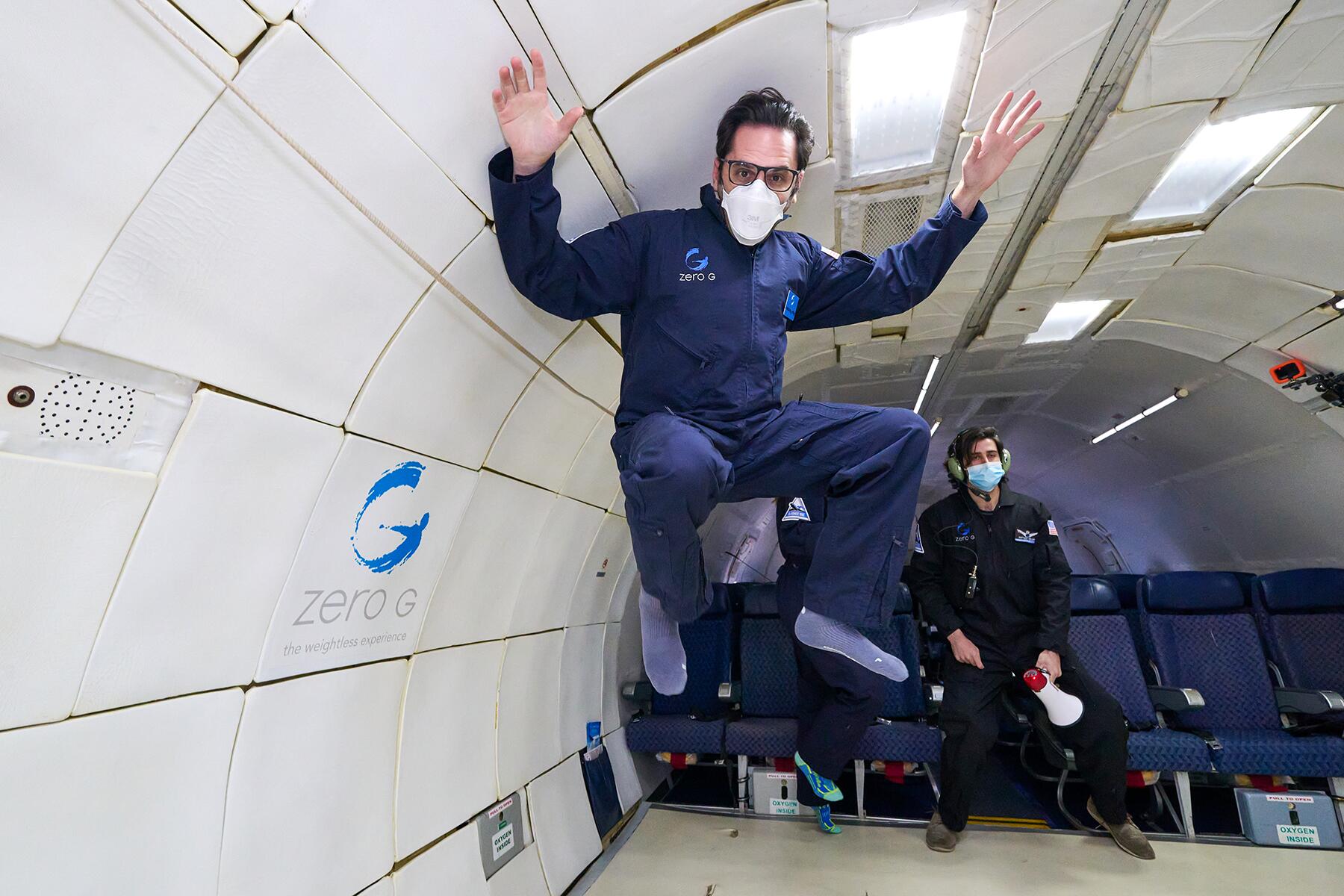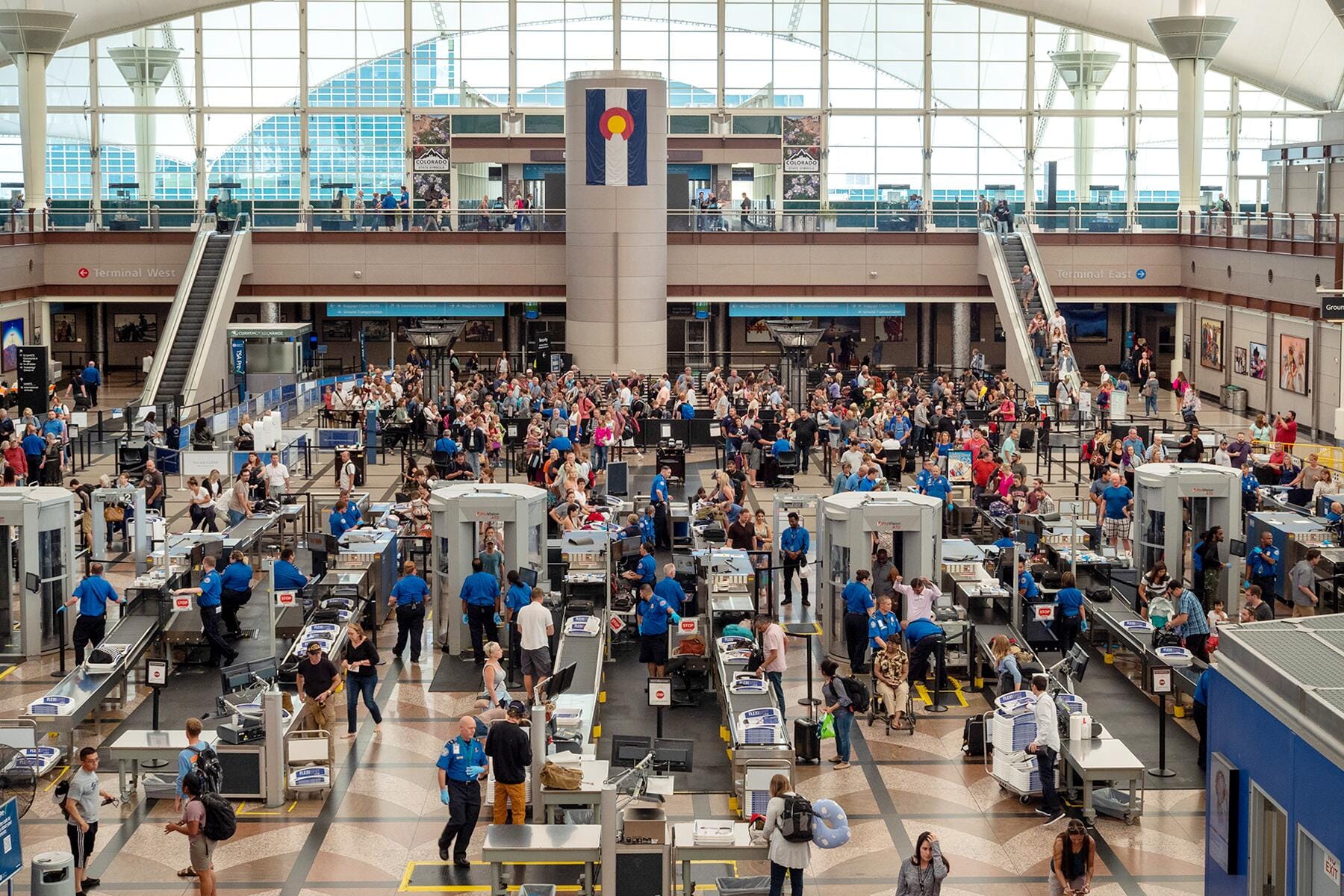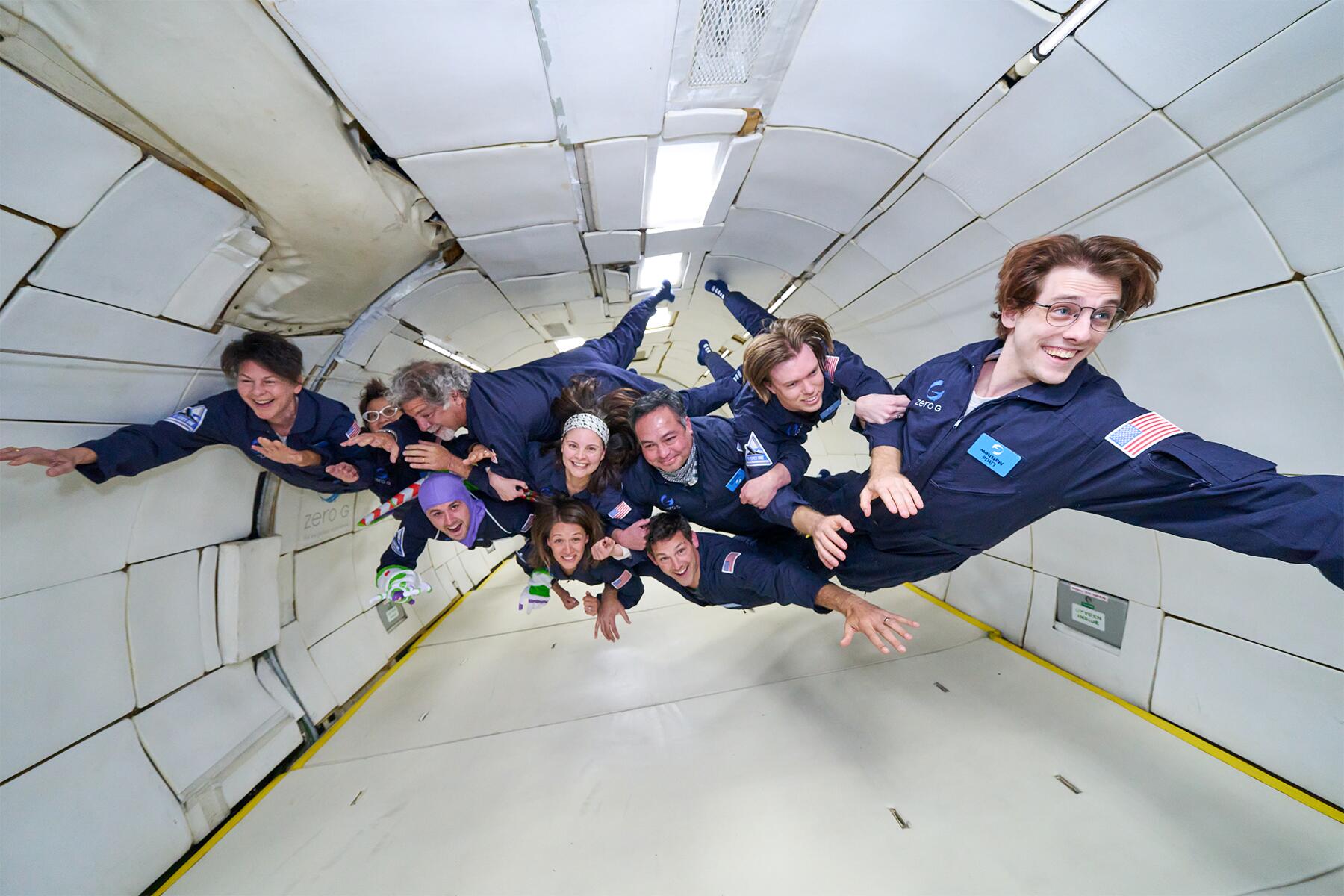I took a ride on the “Vomit Comet” and it was everything I could have hoped for.
I have a very short bucket list that includes one thing: go to space. But I have a problem. Despite what many of you might believe, as a travel writer, I do NOT have millions of dollars to pay Elon or Richard or Jeff (yeah, I first-named them) for a ride on a rocket to circle the earth. My salary won’t cover the cost of a trip to space to experience the thrill of weightlessness and the endless views of our round blue marble of a planet. I am, however, here to tell you that there is hope for anyone with a similar bucket list. While you won’t be going to space, for considerably less money, you will fly like Superman, jump in lunar gravity like Neil Armstrong, and float in mid-air as if you’re staying in the International Space Station (ISS). Interested?
First, some science stuff. The reason astronauts are floating in the ISS is not because there’s zero gravity; it’s because the station is in a perpetual state of falling as it orbits around the Earth. The Space Station orbits the planet at an altitude of 200 to 250 miles, and Earth’s gravity is around 90% at that altitude. As a result, the constant state of free-falling is what accounts for the weightlessness. If you can wrap your mind around it, the International Space Station is free-falling at a rate of 17,500 miles per hour, so it can continue to circle the planet without crashing into it.
Recommended Fodor’s Video
When NASA wants to prepare astronauts for this sensation of weightlessness, there aren’t many options here on earth. Contrary to what you might have seen or heard in movies or television, there is no such thing as an anti-gravity machine to help simulate the sensation of weightlessness in space. Your options are limited to floating around in a pool, which isn’t really close, or flying in the Vomit Comet. That’s right, the Vomit Comet. We’ll get back to this nickname shortly.
Let me introduce you to the Zero-G experience. When preparing for a trip to space, it’s best that astronauts don’t feel weightless for the first time when orbiting the earth. Why? Mostly so they don’t throw up. So, what they do instead (and what you can do too) is go up 35,000 feet in a retro-fitted 727 airplane and free-fall just like the ISS, over and over again.
Zero-G is a company that helps train astronauts and lets civilians experience weightlessness for themselves. Zero-G flies out of multiple airports around America. I arrived at a Long Beach Airport hotel around 9:30 a.m. with 25-30 other bucket-listers. After a quick temperature and vaccination card check, as well as proof of a negative COVID test, we were ushered into a conference room and given a flight suit. You get to keep these flight suits, and Zero-G also gives you a backpack to keep your valuables in when you’re flying.
INSIDER TIPWear comfy clothes because you’ll be stripping down to your underwear so you don’t overheat.
Inside the conference room, we were encouraged to eat, which may seem like an odd thing to encourage but having some heavy, starchy, bland food like bread or bagels in your belly can help stave off getting sick. They also handed out Dramamine, which I recommend taking.

After a brief safety demonstration and another bagel, we were escorted to a bus that took us to a private runway at Long Beach Airport, where the 727 sat tricked out with a massive Zero-G logo. After the obligatory group photo and endless selfies on the tarmac, we boarded the plane from the rear, climbing metallic steps onboard. Inside was a bit surreal. At the back of the aircraft were six or seven rows of regular airplane seats, but beyond was a gutted airplane hull—a 66-foot-long, 10-foot-wide tube with padded white walls and only two small windows looking out. In a way, the plane looked like an insane asylum for adrenaline junkies. Lining the walls were ropes to hold on to and a half dozen GoPro cameras mounted to capture our every floating and flying moment.
INSIDER TIPYou can bring your phone, but let the onboard photographers do all the work once you start flying around.
As we climbed to our cruising altitude, we joined the instructors in the padded hull and sat in a circle, introducing ourselves and telling each other about our goals for the day. Half the people wanted to fly like Superman, and some just wanted to experience weightlessness, while others hoped they wouldn’t throw up or pass out.
The instructors explained that we were about to do 15 parabolas. For those of you who’ve forgotten your high school geometry, a parabola is just an upside-down U, and the airplane will fly up to the peak of that U and then nosedive down. Picture a rollercoaster without any loop-the-loops. At that moment, we’re given the five-minute countdown and handed a doggie bag—just in case.
INSIDER TIPDon’t drink alcohol the night before. Don’t drink a lot of liquids the morning of. There is no bathroom on the plane, and you are in the air for hours. Don’t. Drink. Anything.
We were then told to lie on our backs on the padded floor with our heads facing the cockpit and stare at a single space on the ceiling. Whether I felt eager or anxious, it was hard to tell, but as the plane began its ascent, my body was flattened into the white pads. It felt like an invisible human laying on my chest and holding my arms down as I whispered to myself, “don’t get sick.”
As we reached the top of the parabola, everything shifted. Suddenly that invisible weight leaped off my body, and I was vaulted into the air. The first parabola isn’t weightless—they warm you up by mimicking lunar gravity so you can do one-armed push-ups or bounce up and down as you weigh half what you normally do on Earth.

For 15-20 seconds, we jumped around, giddy but in control, until the plane reached the base of the parabola, and we were told to scramble back onto the floor as the weight of the g-force held us in place once more. Of the 15 parabolas, two or three of them mirrored lunar and Martian gravity to give you a semblance of what weightlessness feels like. But it’s only a semblance. The time raced away quickly between ascent and descent, and when the instructors yelled out that zero-g was coming, we all prepared ourselves for the bucket-list moment of zero-gravity.
Finally, we reached the peak, and like an explosion from a canon, all 25 of us shot out of our laying down positions and flew through the fuselage. We bounced off each other, into the walls, onto the ceiling. We twisted, turned, and spun upside down as we simultaneously experienced various states of joy, vertigo, fear, and disorientation.

If you asked me what it felt like, I’d mostly say it was weird. You might think that with a nickname like Vomit Comet, the sensation would feel like your stomach-dropping, but it’s not that. The feeling is more in your head—and I don’t mean psychosomatic—but literally, you feel it in your head. The moment you go from g-forces stapling you to the floor to weightlessness, your brain begins to calculate this bizarre sensation, figuring out equilibrium and failing to compute. If you’ve ever been seasick, it’s a similar feeling leading up to the point of sickness but not tipping over the edge. Some people experience that sensation as pure joy, while others find their way to the back of the plane and make good use of those doggie bags. I was somewhere in the middle.
My head was swimming by the tenth or eleventh parabola, but I was also getting the hang of weightlessness. When you’re floating, it’s important to be calm. Nothing happens if you try to swim in the air; you just flail. You can only move if you push off something, and the lightest touch can propel you in the opposite direction. Towards the end, I was able to lift myself calmly off the padded floor, float gently up, and take in the moment. The 15-20 seconds is really short but long enough to give you the full space feeling.
When training, astronauts will do 60 of these parabolas, which is where the Vomit Comet nickname comes from. But the 15 we endured was just enough to give us the full weightless feeling without losing those bagels. After the last zero-gravity moments, we all collapsed to the ground, reeling from the experience, trying to rehash in our minds what we just felt. The instructors handed out bags of chips, pretzels, and small bottles of water (don’t drink), as we all regained our composure for the long ride back to the airport.
About four or five people got sick on the flight (including one of the cameramen), but most of us were in various states of euphoria, staring at each other with smiles plastered across our faces and a look that asked, “What just happened?” We got back to Long Beach Airport, where we found a buffet of goodies waiting for us, including champagne and a certificate signifying that we were now in the “weightlessness club.” We were told that we’d sleep hard that night, and they were right.
So, you may ask, was this experience worth it? For me, it was, but to you, I say, to each their own. The experience costs around $8,000, which is not cheap. But if you want to be able to fly like Superman and float like an astronaut without paying millions of dollars, you could argue it’s a bargain. For us average Joes, this just might be the closest we get to feeling like we’re in space, minus the view. For me, the bucket list item of going to space is still unchecked, but the feeling of going to space has gotten me one step closer to the real thing. Once you have a bite of that apple, there’s no going back. Now I just need a few million dollars to book my seat on a space rocket.



